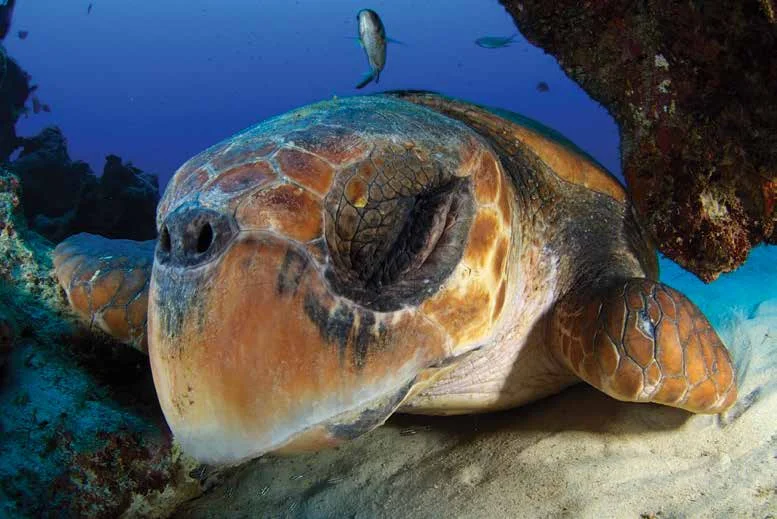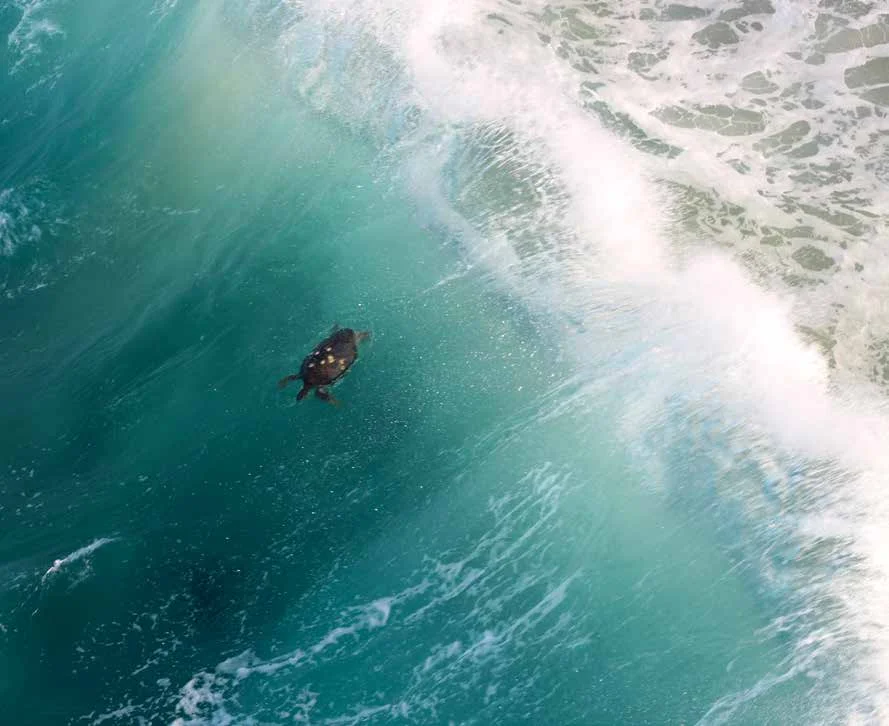Aligned along the edge of the western North Atlantic Ocean is the U.S. Atlantic seaboard, a heavily populated region of coastal cities, maritime ports, military bases, and tourist beach destinations that covers more than 25,000 miles of coastline and spans 14 U.S. states from Florida to Maine. It is inevitable that sea turtles and human activities will intersect in the coastal waters and beaches of this highly trafficked zone. This story is about the region’s ongoing programs that Rescue, Rehabilitate, and Release (the three Rs) thousands of sea turtles annually and about the network of dedicated organizations and passionate professionals, volunteers, and public supporters who make it all happen.
Read MoreThe Mediterranean Sea is a bountiful yet dangerous place for sea turtles. Characterized by beautiful natural and cultural heritage sites and by rich biodiversity, the Mediterranean is also a troubled and overexploited sea, where sea turtles have a hard time coping with high fishing pressure, gas and oil development, major cross-continental maritime traffic, beachfront and other habitat impacts, and widespread marine pollution.
Read MoreIt has been 20 years since the satellite track of Adelita hit the mainstream media and newly birthed internet, sharing the real-time migration of a loggerhead sea turtle from Baja California, Mexico to Japan with millions of people worldwide. Captured in Mexico’s Gulf of California as a small juvenile and reared in captivity for more than a decade, Adelita couldn’t wait to return home once released. Up to that point, nobody could have imagined that a turtle could swim more than 11,500 kilometers (7,145 miles) in only 368 days…
Read MoreJapanese folklore tells of a fisherman, Urashima Tarō, who rescues a sea turtle from torment and sets him free. In gratitude, the turtle transports the fisherman to a mythical Dragon Palace beneath the sea, where he is welcomed by a beautiful princess. This eighth-century fable sets the cultural backdrop for modern sea turtle conservation in Japan, where community-led efforts have restored once-decimated sea turtle populations.
Read MoreIn Uruguay, the threat of plastic pollution looms large in an area considered to be an important foraging and developmental habitat for sea turtles in the southwestern Atlantic Ocean. In recent years, NGO Karumbé has focused in on the issue of plastic pollution through strong community engagement programs designed to embed conservation ethics in the Uruguayan people.
Read MoreThe Kemp’s ridley is a signature species for the Gulf of Mexico, and it has become an icon for conservation. Its story includes a long-term international conservation effort, undertaken by Mexico and the United States, which brought the species back from the brink of extinction. A recently completed IUCN Red List assessment not only evaluated the Kemp’s ridley’s current conservation status but also provided a rare glimpse into the history of a critically endangered species prior to its decline.
Read MoreSWOT’s vision is a permanent global network of specialists working to accelerate the conservation of sea turtles and their habitats—pooling and synthesizing data and regularly sharing the information with audiences who can make a difference. This only works because SWOT Team members choose to share their data. In this article, the SWOT Editorial Board addresses some of the common objections to sharing data, as well as the benefits of doing so.
Read MoreIt is seven o’clock in the morning, and we are on an old wooden pier in a mangrove swamp on the south coast of Bahia, Brazil. After a night spent on a bus, our group boards two traditional fishing boats heading to Coroa Vermelha Island, a coral reef 13 kilometers offshore. Students of veterinary medicine and biology, journalists, an economist, an architect, a sales representative, and a retiree. Our shared goal is to capture juvenile green turtles, looking for signs of an all-too-common disease.
Read MoreLocated halfway between the resort cities of Acapulco and Puerto Vallarta, the coastline of Michoacán is comparatively quiet and secluded. Broad, sandy beaches here provide ideal nesting habitat for the black sea turtle. The rugged, vast expanse of Mexico’s Pacific coastline is the setting for one of the most inspirational sea turtle conservation success stories of all time.
Read MoreWhen TAMAR started monitoring Itapuã beach in 1990, staff had to relocate nearly all nests to ensure that hatchlings would survive. Thanks to years of working with local stakeholders, coordinated social media campaigns, and public outreach. In the ensuing years, enhanced local participation in the protection efforts made it possible to increase in situ protection of nests from only 3 nests to 140 over the course of nearly 3 decades.
Read More









